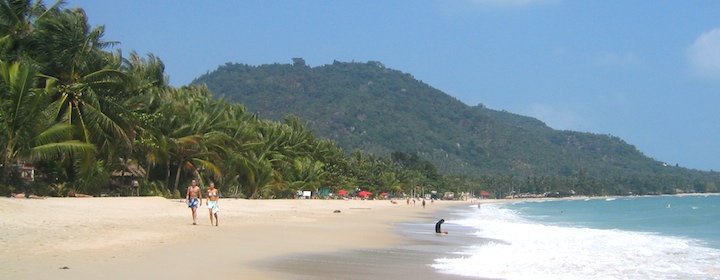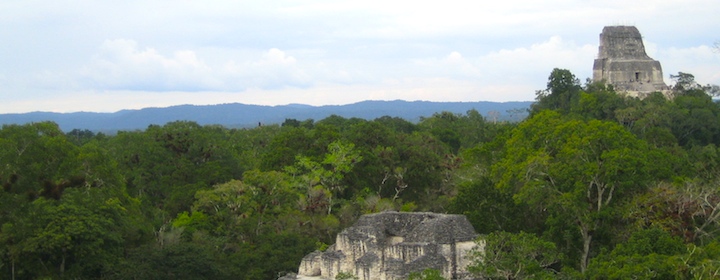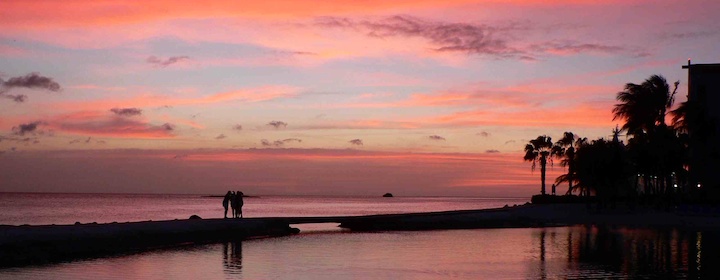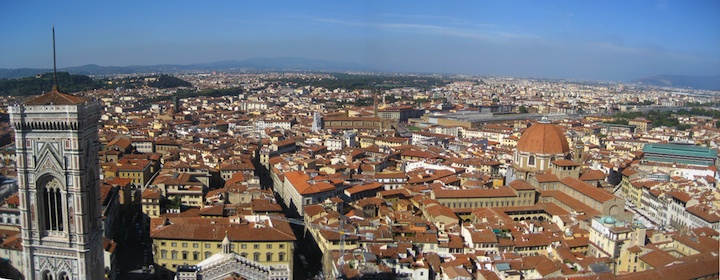One of the great rites of passage is the summer backpacking trip through Europe. For young people, especially college-aged Americans, the summer trip is one of the most memorable experiences people have in their life. From beautiful Paris, to smoke filled coffeeshops in Amsterdam, to Oktoberfest, to the beaches of Greece, there’s so much to see on the continent I couldn’t name it all even if I tried. But even if you aren’t about to backpack around Europe, the continent holds wonderful beaches, historical architecture, amazing wine, and wonderful people. Every country is incredible different than the next. I’ve visit the continent every summer and always find something new that blows my mind. This extensive backpacking travel guide will help you visit the continent on a budget.
Destination Guides for Europe
Typical Costs
Individual country guides have more specific information but here are some general costs:
Accommodation – Hostel dormitory rooms cost between 18-40 EUR per night, depending on the room’s size and the popularity of the hostel. I stayed in a 6 bed dorm in Berlin for 15 EUR, while the same one would have cost me around 32 EUR in Paris. A room in Paris will cost on the higher end and a room in cheaper Athens will cost on the lower end. Campsites cost between 9-15 EUR per night per person for a tented space. In Eastern Europe, hostel dorm rooms cost between 6-15 EUR per night depending on the size of the dorm room and popularity of the hostel. The further east you go, the cheaper it gets. A private room in a hostel will cost you around 27-55 EUR per night for a double bed with a shared bathroom. Cheap hotel rooms start at 27 EUR for a two star hotel with breakfast, private bathroom, wi-fi, and double bed.
Food – Throughout Western Europe, you can find small shops where you can get sandwiches, slices of pizza, or sausages for between 4-7 EUR You find these shops are most often found in train stations, bus stations, and main pedestrian areas. You can cook your own food for around 65 EUR per week. These small sandwich shops offer cheap food alternatives that can have you eating on between 9-15 EUR per day. Restaurant meals cost around 13-25 EUR for a main dish and drink. Food is much cheaper in the east than in the west. Even if you are eating out for all your meals, you still get by on as little as 9 EUR per day. See country information for more specific food costs.
Transportation – Transportation around most European cities by local tram, subway, or bus is typically 1.80 EUR for a one-way ticket. Intercity train prices vary wildly from country to country and depending on whether you take the slow train or a high speed train. A high speed train from Berlin to Munich costs around 190 EUR, Bordeaux to Paris is about 95 EUR, and Madrid to Barcelona is about 150 EUR. Non-high speed trains and other intercity lines are a lot cheaper, generally costing about 40-50% the price of high speed trains. Eastern Europe inter-country trains usually cost between 45-100 EUR when the ticket is booked last minute. Short trains rides of 2-3 hours within countries cost about 27 EUR. Buses are cheaper than trains. The main bus service is called Eurolines and it reaches throughout the continent. Every country has its own national bus service but for international long distances, Eurolines is a great option. In the east, the major international bus company is also Ecolines, which primarily serves central Europe, the Baltics, and other Eastern European countries except the Balkans. Additionally, hitchhiking is also a popular method of travel in Eastern Europe and Scandinavia.
Activities: Most museums and tours start at around 14 EUR. It’s cheaper of course in the east. Full day tours cost between 35-100 EUR. Prices vary drastically per country so it’s hard to give a good general cost. See country information for more details.
Money Saving Tips
Individual country guides have more specific information but here are some general tips on saving money in Europe:
Picnic – This continent has a lot of little tiny shops where you can be pre-made sandwiches or ingredients to make your own. Buy some food, eat outside, and watch the city go by. It’s a much more enjoyable and cheaper way to eat.
Eat local and cheap – Not into picnicking? That’s ok, there are other ways to save money on food. Eat a local sandwich shops, pizza parlors, Maoz, Wok to Walks, outdoor street vendors, and the like. Avoiding restaurants and eating at a lot of the local “grab n’ go” places will give you a taste of the local cuisine at a much cheaper price.
Plan accordingly – Transportation can eat into your budget. Traveling costs money. A good way to save money is to avoid moving in weird directions. Move in a straight line, and avoid doubling back and avoid paying too much for transportation.
Couchsurf – Hostels can add up really quick. If you don’t have any friends with whom you can stay, consider using the service
Couchsurfing, which lets you connect with locals who will let you stay with them for free.
Fly cheap – If you know where you are going and a train won’t do, try to book flights early. You can often get round trip fares as little as $5 USD from many of the discount airlines like Transavia, Easyjet, Wizz, and Ryanair. Watch out for fees though! These airlines nickel and dime you.
Drink less – Those 5 Euro beers really add up. Hit happy hour or pick and choose when you party. Hostel bars are a good place to get cheap drinks or buy your alcohol at the supermarket. Partying your way across the continent will destroy your bank balance in no time.
Camp in a garden – A very good camping service specific is Camp in My Garden (http://campinmygarden.com/), which allows you to pitch a tent in someone’s backyard for free or a nominal fee (around 4-10 EUR). This is a new service that started in 2010 but more and more people are signing up for it each day. All of the garden owners have profiles that tell you what services and facilities they offer.
Get a city tourist card – Local tourism offices issue a tourist card for all their attractions, tours, and restaurants. This card gives you free entry and substantial discounts on all the attractions and tours in a city, free local public transportation (a huge plus), and discounts at a few restaurants and shopping malls. They save a ton of money. In Oslo Norway, the VisitOslo card saved me 27 EUR and I got free public transportation. By buying the Paris museum pass, I saved 78 EUR off the normal price of the museums, and I saved over 65 GBP with the London card. If you plan on doing a lot of sightseeing, get this card.
Take the free city tours – One of the great things about Europe is that you can find free walking tours in all the major cities. They can be a great way to see the city attractions, take in some history, and learn your bearings without spending any money.
Get a Rail Pass – Eurail Passes have saved me hundreds of dollars when I traveled around. If you are traveling far distances and through many countries, they are a great deal.
Rideshare – If you’re flexible in your schedule, use the ridesharing service BlaBlaCar and catch rides with locals between cities (or countries). I used this service in Switzerland and, not only did I save a lot of money, but I got to meet interesting people to and learn about local culture and life. Drivers are verified and it’s perfectly safe (though sometimes rides don’t show up, which is why you need to be flexible).
Top Things to See and Do in Europe
There is a lot to do in Europe and trying to list everything on a continent would be too difficult to do. Below are some of my favorite activities. Clicking on the city and country links in this article will help you branch off and get more details.
Get lost in Paris – The city of lights is everything people say it is. I felt like I was in love the first time I stepped foot in the city. It’s one of my favorite cities in the world – the food, the wine, the atmosphere, the history. It’s hard not to see the magic. You’ll never be able to see the city in just one visit. There’s too much to do. It would take years to see everything. But you can get a good idea of the city over a few days.
Click here for my guide on how to spend 5 days in Paris. Amsterdam – There’s more to the city than just coffee shops and red lights. I love this city so much, I lived here for a short period of time in 2006. Cobblestone and brick streets weave around lovely canals. Amsterdam has a vibrant art and music scene and friendly locals willing to help you out. Make sure you get out of the center into the Jordaan and Oost with their wonderful outdoor cafes.
The Greek Islands – These islands are the mecca of summer beach fun. The island of Ios is party central, Kos and Crete are popular destinations for Brits, Santorini has history, Mykonos is luxurious, and Paros is quiet. With hundreds of islands, you can always find what you are looking for. I try to go every summer.
Read more about the Greek Islands here. Relax in Barcelona – Barcelona is a city that goes 24 hours a day, 7 days a week and could give NYC a run for the “city that never sleeps” title. Be prepared for late-night dinners and parties til dawn. Barcelona knows how to get down. Besides a great food and nightlife scene, there is a wonderful beach, Gaudi architecture, and history dating back to Roman times.
London – Get a taste of English culture in diverse London. The museums here are some of the best in the world (and free), plus the city offers great food, and the pub culture is wonderful. Head to Brick Lane for some amazing Sunday food markets. I prefer Paris to London, but there is something sophisticated and fun about London. Just watch those pints – London is not a cheap destination.
Berlin – Hip and trendy Berlin is a energetic destination. It is one of Europe’s most affordable capital cities with a vibrant music and art scene and a growing foodie movement. There is a ton of cheap Middle Eastern food. Be sure to check out the history museum – it’s one of the best in the world.
Oktoberfest – Oktoberfest is a must for anyone going through Germany at the end of September. There are people from all over the world, lots of beer, excitement, music, and wild fun. Watching thousands of people sing together, toast, and party atmosphere makes you feel good about the world. (Or maybe that’s just the beer?)
Prague – Prague is a beautiful city with amazing history. It’s a cheap destination and during the weekends it heaves with people enjoying the bars, cheap beer, and delicious food. It is one of the most beautiful and picturesque cities I’ve seen.
Interlaken – Located in the beautiful mountains of Switzerland, Interlaken is a great place to unwind with some good hikes, hot chocolate, and outdoor sports. It’s a good alternative from all the cities and museums you constantly see. Interlaken is also a popular party destination for backpackers and other young travelers.
Explore Rome – This thriving historical city has amazing food and nightlife. Moreover, with its tiny little streets to wander through (you can’t walk two feet without stumbling over a ruin), it’s a history buff’s dream. Visit the Trastevere area for a taste of “local” Rome and chill bars. It’s my favorite area in the city.
Hike around the Cinque Terre – This is my favorite part of Italy. These five beautiful cliff side towns are perched near warm waters and beautiful olive and grape groves. You’ll find
some wondrous and strenuous hikes in these hills. For a real challenge, take trail #8. Or just walk the coastline for something less difficult.
Wine and dine along the French Riviera – Have fun in the sun, hob nob with the rich and famous, and sail (or gaze at) gigantic yachts. You can pretend to live the high life for a little bit.
Nice is nice and Monaco is just a skip away.
Krakow – Krakow looks like it stepped out of a medieval postcard. It’s even nicer than Prague! It’s a hip, trendy, and youthful city as it is the center of education in Poland. You have a lot of university students here. Most travelers come to party here (the vodka is cheap) but try to enjoy the city’s history and food besides just the bars. Auschwitz concentration camp is also close by.
Cornwall – The best part of England is outside London, and unfortunately not a lot of people leave London. Head west to the area of Cornwall for cheaper prices, friendlier locals, more natural beauty, great hiking, rolling hills, small towns, and overall what you think of “traditional England.”
The Swiss Alps – Whether you go skiing in the winter or hiking in the summer, the Alps hold some of the most breathtaking views in all the world. In fact, whether Italy, France, or Switzerland, all the alps are great!
Throw tomatoes during La Tomatina – By far
my favorite festival, this giant food fight happens during the last Wednesday of August in Bunol, Spain. For about an hour, everyone throws tomatoes at each other and the streets become ankle deep in tomato juice. Afterwards, everyone walks down to the river, cleans off, and then heads to the town square for sangria and music.
Find more than Dracula in Romania – Not a lot of people visit Romania but this is off the beaten path country in Eastern Europe has undiscovered medieval towns, gorgeous beaches on the Black Sea, and incredible hiking – all at dirt cheap prices. I spent $30 USD per day here and experienced the country without any of the crowds of central and western Europe!
Visit the ruin bars in Budapest – The coolest nightlife in all of Europe is found in Budapest. These bars are built in abandoned buildings and lots and feature funky art installations and decor. They are amazing, fun, and great places to meet locals. People of all ages flock here. If you skip these bars, you miss out on one of most unique things about the city.
Hang out in Scandinavia – My favorite region in Europe is Scandinavia. The quality of life here is high, the people beautiful and friendly, the cities clean and historic. True, this area of Europe is not cheap, but there are plenty of ways to reduce your expenses. Don’t let the high prices scare you away. Highlights for me include
Copenhagen,
Stockholm, Gotland,
Norway’s fjords, and Lapland in Finland.







